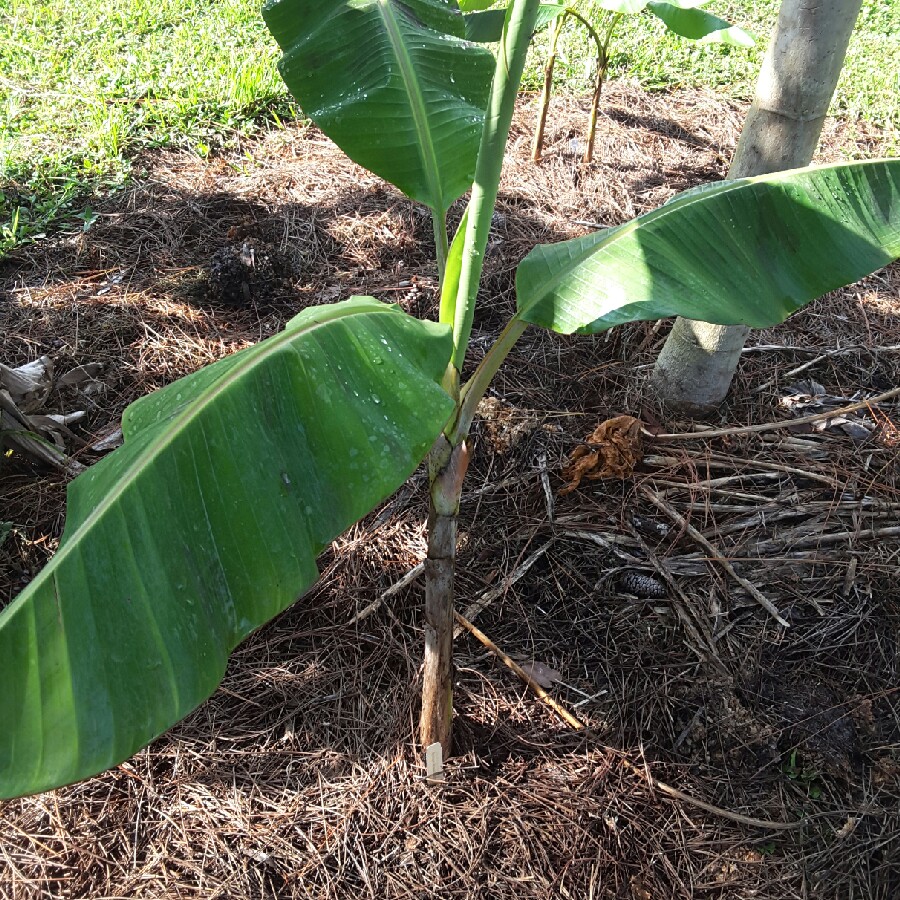
Musa acuminata x balbisiana 'African Rhino Horn'
Rhino Horn Plantain
'African Rhino Horn' is a tall plantain with long, strongly curved fruits. It makes an excellent landscaping plant, but too big for most containers. The fruit can be eaten ripe or cooked like other plantains. ‘African Rhino Horn’ has attractive foliage and can reach up to 6m tall. This banana cultivar may have the longest fruits of any banana; up to 60cm in length, an individual fruit may weigh as 3.5 pounds.
Contributed by @skellyshelly
-
Full sun
-
Frequent watering
-
Not Frost hardy
-
Rich and free draining
Common name
Rhino Horn Plantain
Latin name
Musa acuminata x balbisiana 'African Rhino Horn'
type
Tender plant
family
Musaceae
ph
6.0 - 7.5 Acid - Neutral
Plant & bloom calendar
-
Best time to plant
full grown dimensions
 4.00 M
6.00 M
4.00 M
6.00 M
Musa acuminata x balbisiana 'African Rhino Horn'
'African Rhino Horn' is a tall plantain with long, strongly curved fruits. It makes an excellent landscaping plant, but too big for most containers. The fruit can be eaten ripe or cooked like other plantains. ‘African Rhino Horn’ has attractive foliage and can reach up to 6m tall. This banana cultivar may have the longest fruits of any banana; up to 60cm in length, an individual fruit may weigh as 3.5 pounds.
Planting young plants
From Late Spring TO Late Spring
When planting young plants, choose a sheltered site, out of known frost pockets. Shelter from the wind is also essential to prevent leaves being shredded. Plant in late spring, in a well-drained soil, enriched with well rotted manure or organic compost. Once plants are established, water and feed generously to get the best foliage. Smaller banana species make ideal container plants, which can be placed outdoors for the summer and brought indoors over winter. Plant in a loam-based compost, such as John Innes No. 3 with extra grit and site them in full direct sunlight and keep well watered.








